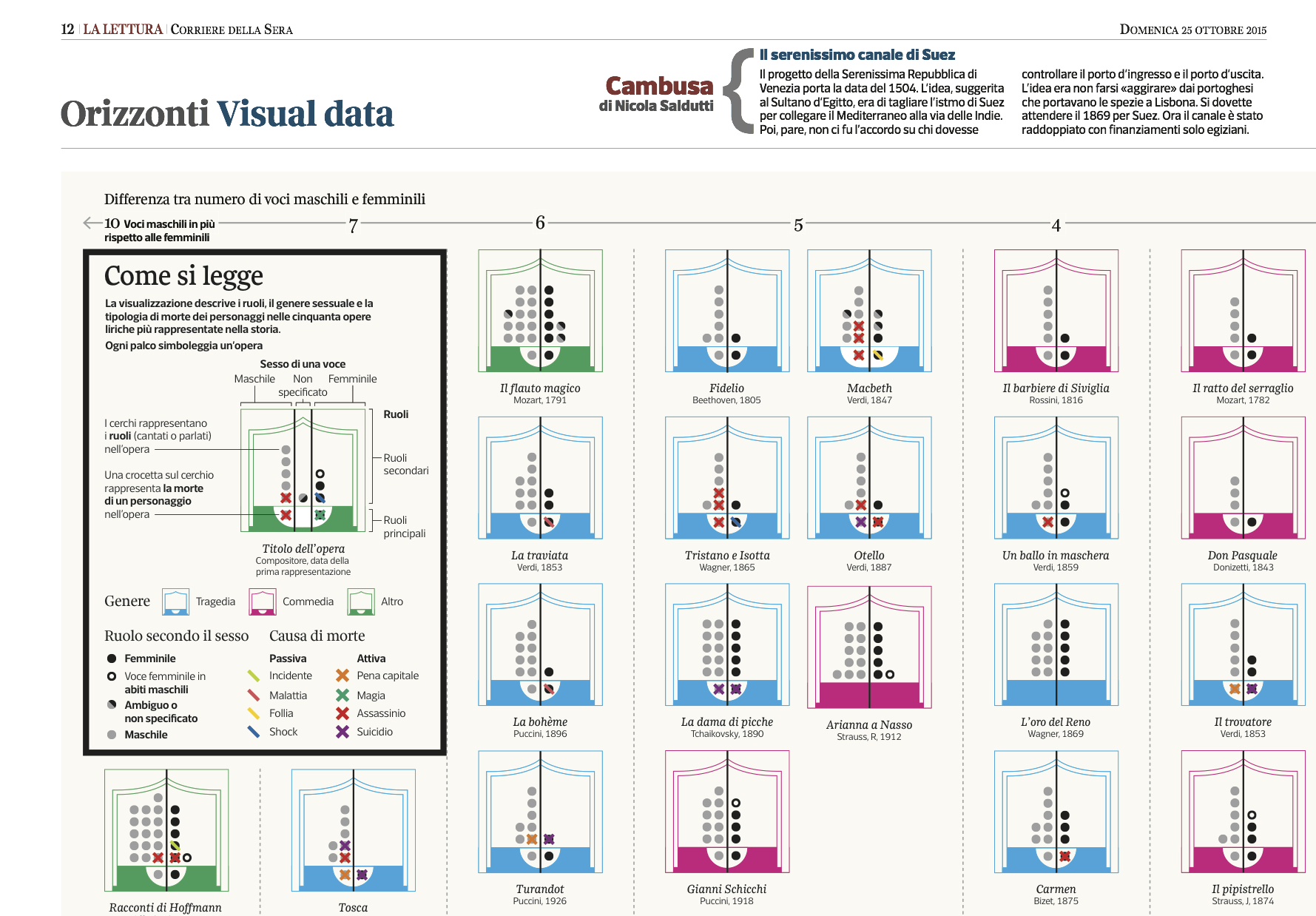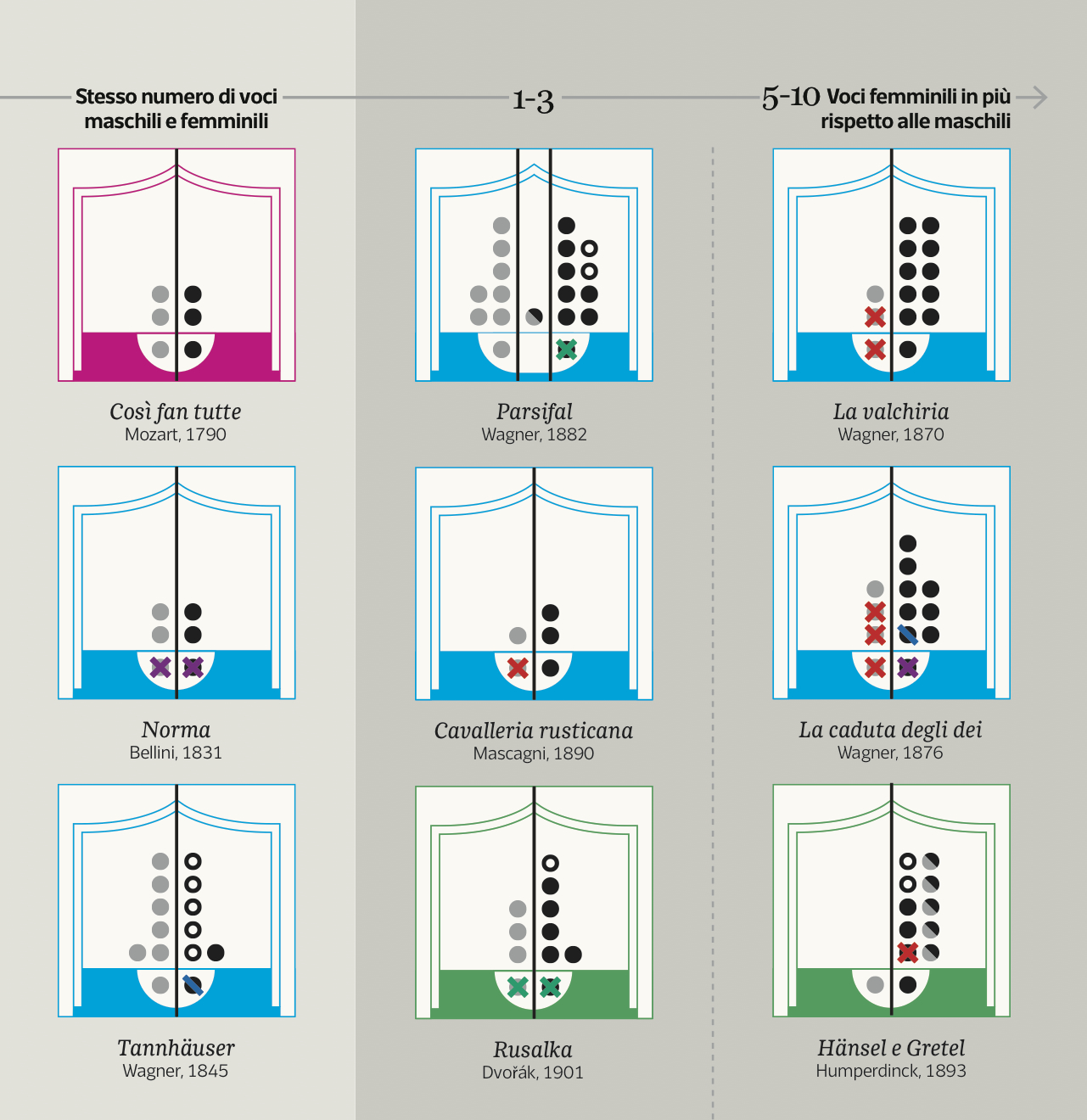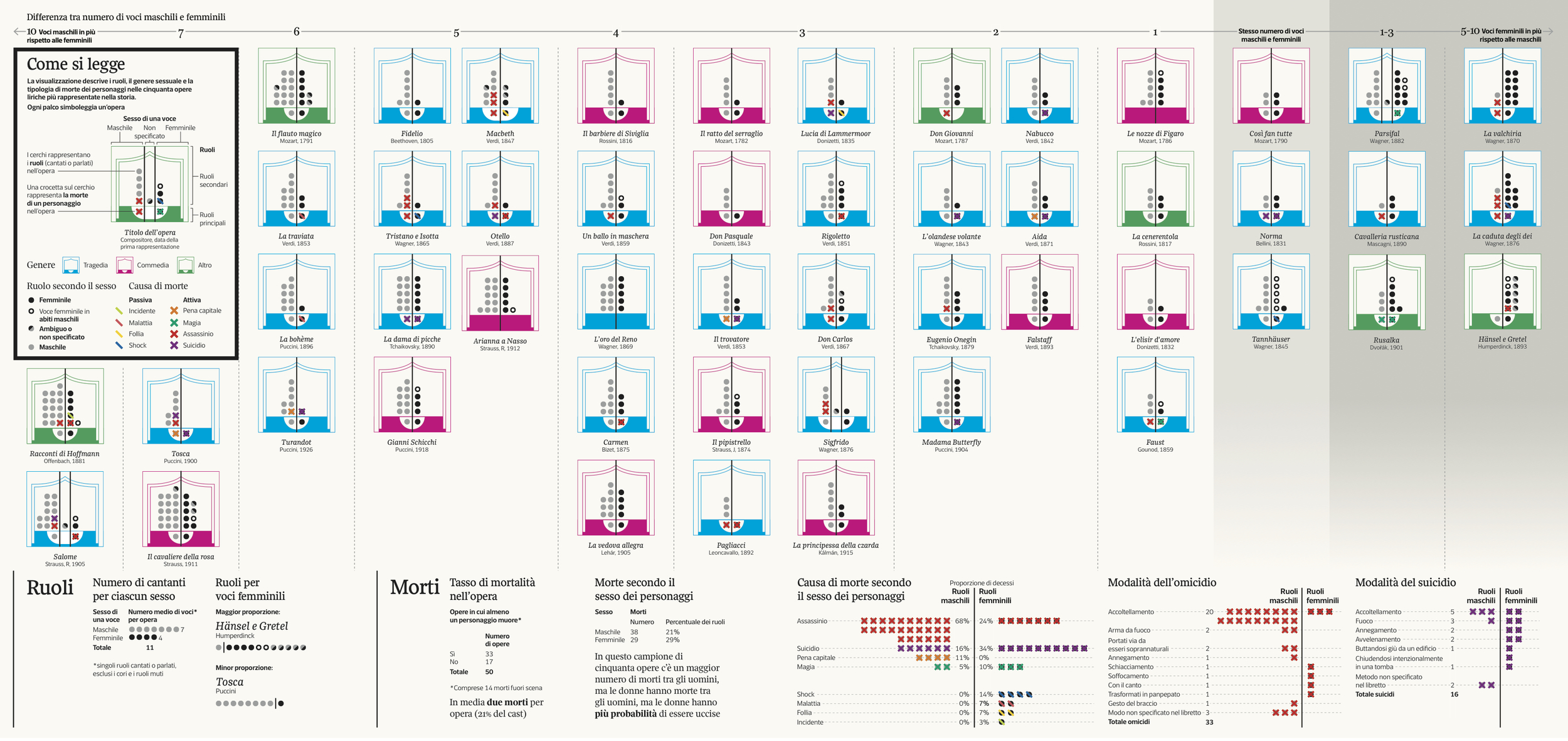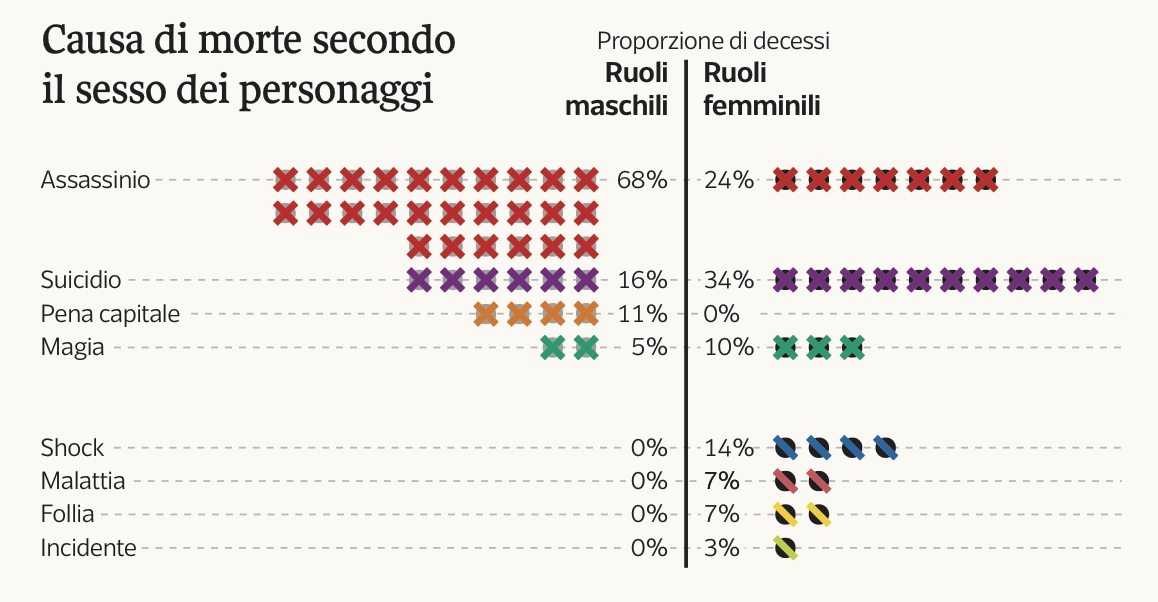Gender in Opera
with Stefanie Posavec, 2015
Printed infographic commissioned by La Lettura, the Sunday arts supplement of Italian newspaper Corriere della sera, which is renowned for its quality data visualisations.
Each miniature stage represents a single opera. The operas are organised horizontally by the relative proportions of male and female singers who get a look-in to the libretto: operas with more male voices on the left and a progressively larger share of female voices as you move towards the right of the graphic. Every character is represented by a single dot. Where the dots are crossed out, the character dies during the opera, with the type and colour of dot indicating how the character died (murder, suicide, mysterious magical means and so forth).
Opera is full of gender-swapping: female voices regularly play male roles (so-called 'trouser roles'), although curiously it never seems to happen the other way round. It's also full of deaths. Gruesome, glorious and often gratuitous deaths. The initial inspiration for this piece was Catherine Clément's observation that the leading lady rarely makes it to the end of the opera, in what she called the 'infinitely repetitive spectacle of a woman who dies, murdered'.
But how common are female deaths in opera? And do female characters have a higher death rate than male characters? These were the questions we set out to answer when we pitched the idea for this piece. The research for this piece was lots of fun: going through operatic libretti to find out how many parts were sung by male voices and how many by female, how many of these were actually male or female parts (or weird third-category asexual entities like spirits), how many characters died, and exactly how they perished. But it was a slow process and we soon realised that with this method we weren't going to be able to get data from enough operas to answer our broader questions. (We managed 50 operas, and that was quite enough.)
That said, some potentially interesting patterns emerged. We categorised the causes of death as 'active' (murder, suicide, execution or magic) or 'passive' (shock, disease, madness or accidents). In these 50 operas, male characters always die of active causes, mostly murder (and these were mostly stabbings). Female characters, on the other hand, often die passively or in bizarre ways (death by singing, turned into gingerbread). Sometimes they simply expire for no apparent reason other than that their role in the plot is over.
Stefanie's design reminds me of dominoes or tic tac toe. Gender is a game we play.



